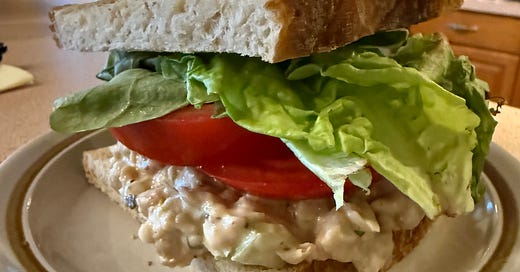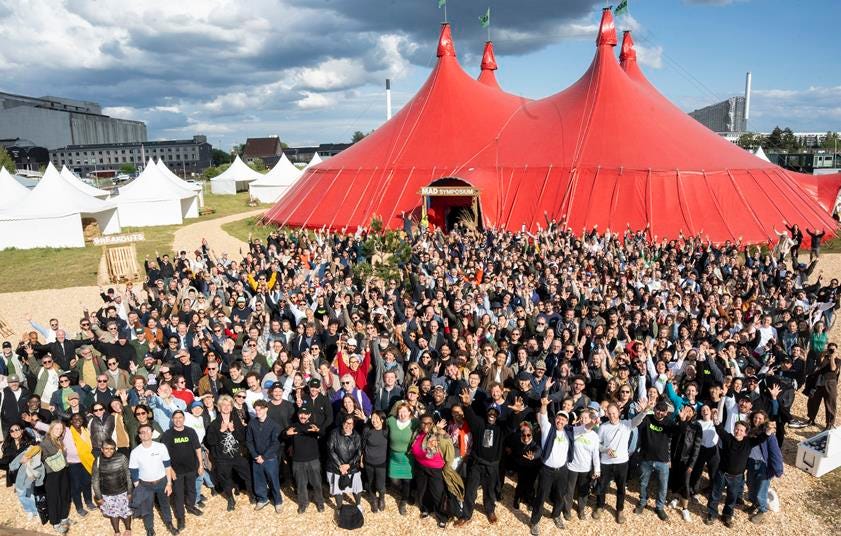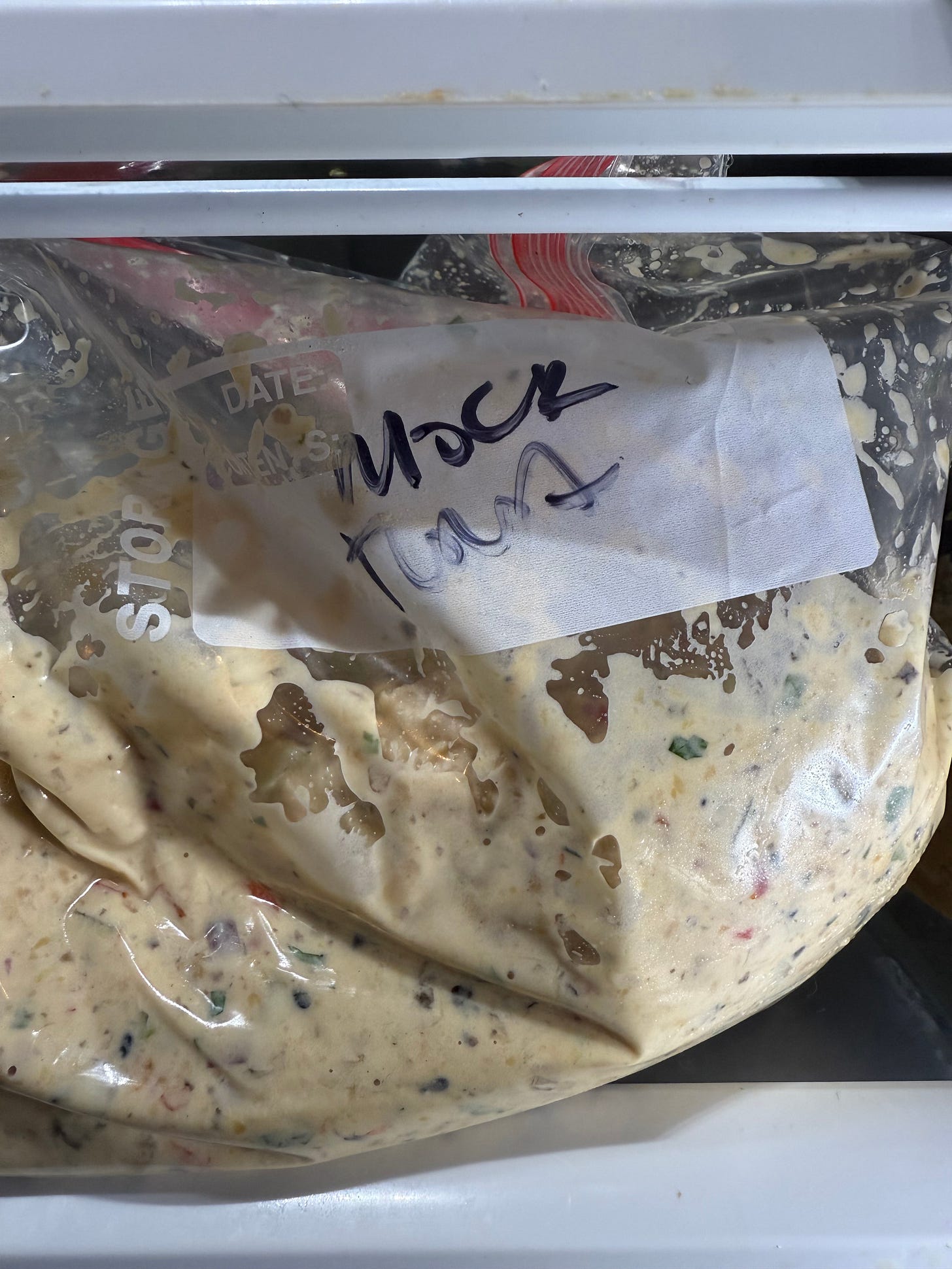I’m writing this week from Copenhagen, where the seventh MAD Symposium just concluded. MAD is the international food conference conceived more than 15 years ago by pioneering chef Rene Redzepi of Noma. (Mad means “food” in Danish, and fittingly, it is also my initials.)
I happened to be vacationing in Copenhagen with family and friends back in 2011, when MAD was launched. Despite torrential rains that caused massive flooding and turned Refshaleøen and the circus tent erected there in which the gathering was held into a muddy mess, it was a mind-opening and inspiring couple of days. You knew immediately from the cheering ovations of the young crowd of cooks from around the world who gathered for the event—journalists were purposefully kept at bay—that something important was happening.
I attended all but one or two of the subsequent symposia, conducting a breakout session on political advocacy and gastrodiplomacy with Johanna Mendelson Forman at MAD5 in 2016. MAD 6 in 2018 was the last of the run. Until now.
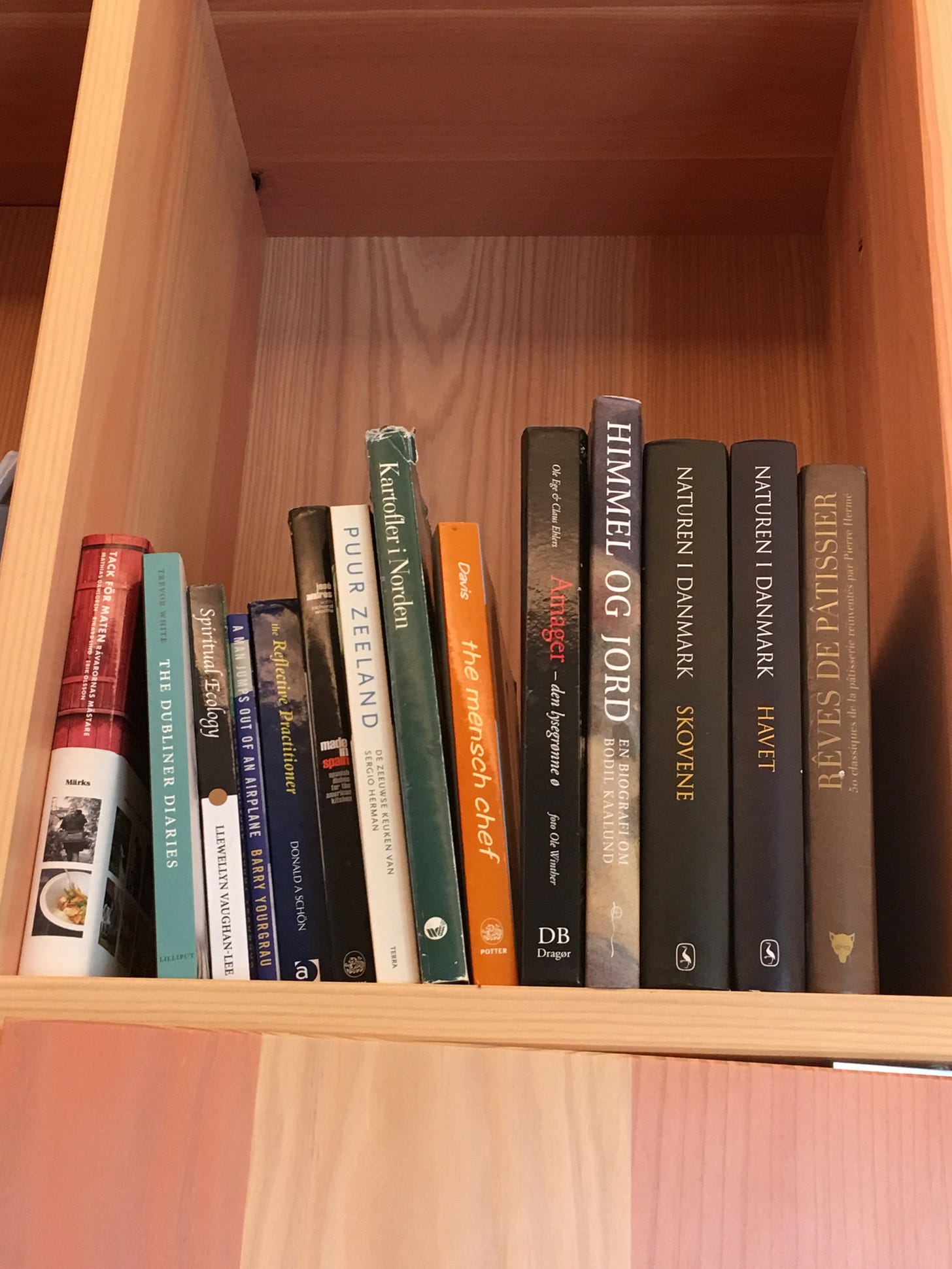
Like the first MAD, this year’s revival felt special. Though the crowd was noticeably older and perhaps more tired and cynical after having dealt with COVID, inflation, labor shortages, and a rightward political swing, the gathering was no less inspiring, the cheering no less loud. Redzepi doesn’t want cynicism to seep into the dialogue and effectively the stories shared were for the most part positive and hopeful. The curators’ inspiration came from a comment made by chef Rosio Sanchez, when asked what she wanted to get out of MAD7, “I want to fall in love with the industry again.” For those lucky enough to snag an invitation—and I personally know of several worthy people who weren’t—I’m sure they succeeded.
In addition to the content on stage—this year’s theme was Build to Last, exploring both the future we create and the legacy we leave behind—what impresses about MAD is the level and quality of hospitality delivered by the staff and volunteers who make it happen. Greeters cheer the arrival of each boat as it approaches the site until the last passenger has come ashore. Immediately you are excited to be there. Redzepi himself welcomes every guest each day with a handshake or a hug. Danish hygge is on full display.
The effort and intention in every detail is evident. The amount and quality of the food and beverages served to nearly 1,000 people, in a tent no less, are the exception that proves the rule that it’s possible to deliver a near-perfect, intentional meal in a timely manner at scale.
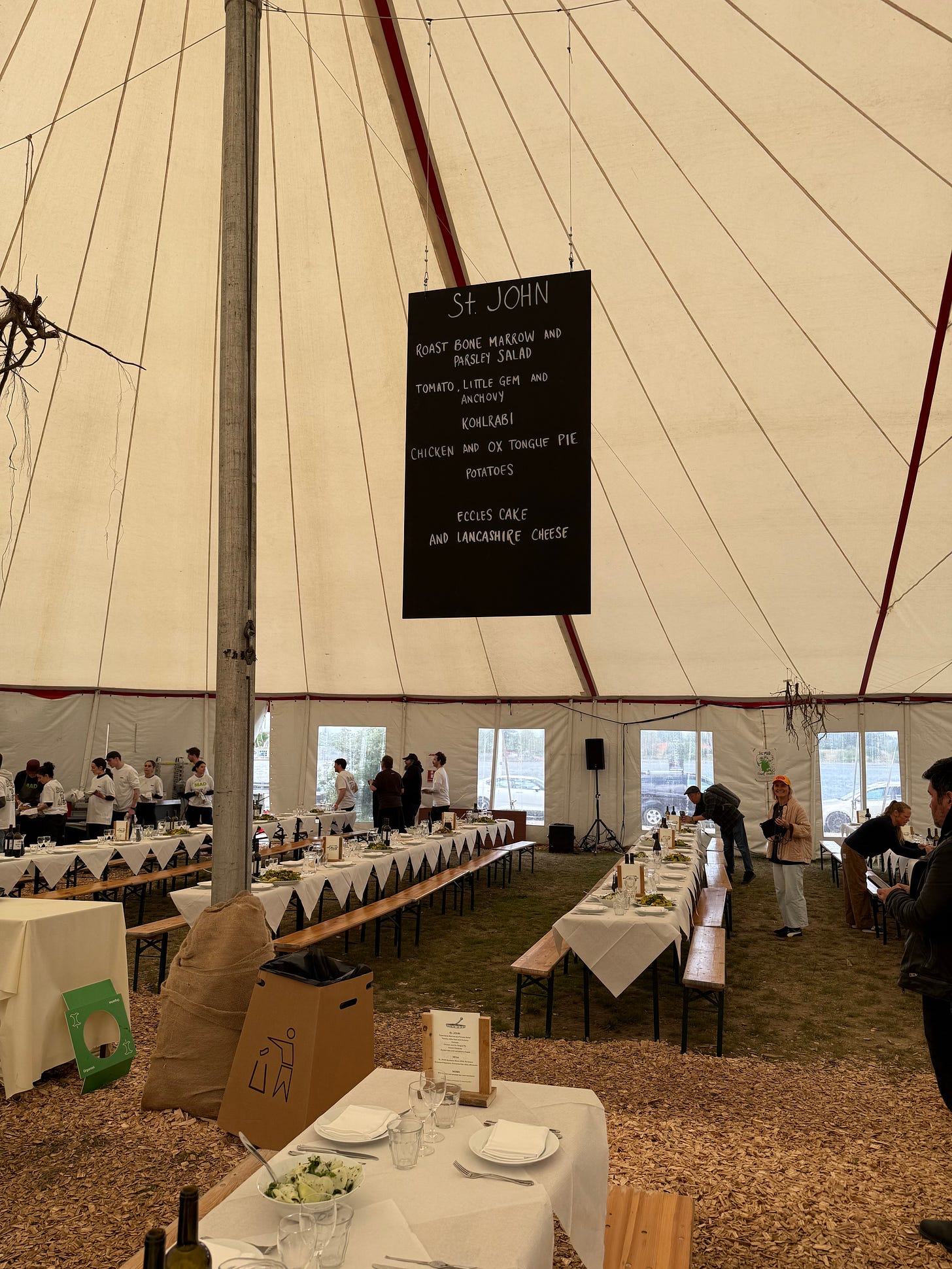
Although it wasn’t the focus of any one presentation, several times and in several discussions the question arose about what impact AI will have on the restaurant profession. (During Redzepi’s interview of Thomas Keller, Keller insisted we not refer to hospitality as an industry, rather as a profession.) I heard no consensus of whether or how AI would impact the work of fine restaurants in any significant way. On the heels of Google’s new AI video-making tool that’s impressing critics and Open AI’s acquisition of Jony Ive’s IO hardware company this week, I can’t help but think it’s going to affect everything.
Like Video and Everything, Food Isn’t Always As It Appears
Contemplating the topic of artificial intelligence there in the MAD tent, a sort of church of craft and authentic culinary expression, got me thinking about the tradition of fakery in food.
Chefs have long enjoyed duping their diners. From the ornately deceptive performance pieces at the banquets of the French courts, to the mock meats used in Chinese Buddhist vegetarian jais, to the elaborate techno-emotional dishes of Ferran Adria’s El Bulli—liquid olives, anyone?—at the best tables what you see is often not what you get. Even in the more mundane realm of home cooking, fakery finds a foothold. Consider the popularity of surimi crab or the mock chicken liver (made with Tam Tam crackers) that made the rounds of suburban Jewish homes, including my own, in the 1970s.
Will AI provide additional tools chefs can use to tantalize and deceive? Will it take jobs away? Will it improve menu copy? We ought to prepare.
I had arrived in Copenhagen after a few days of a retreat at the International Center of the Taoist Tai Chi Society of the USA in Dunedin, Florida. As I wrote in last week’s newsletter, in addition to deepening my practice, I was cooking for the national directors, of which I am one. This is the second time I was making meals during a retreat, and in addition to the broccoli salad, the recipe for which I shared in Issue #208, both times I also included in a vegan mock tuna salad among the lunch options. To my surprise, I liked this fake fish very much.
I did not conceive of the idea of using mashed chickpeas as a substitute for tuna. Google it and you’ll see a world of recipes. But as Nate will tell you, I’m pretty good with luncheon salads, and by mixing my go-to salad flavors into the chickpeas—red onion, capers, pickles, and in this case, a sprinkle of Holy Tshili Spicy Everything Furikake, which adds a little kick and a hint of sea taste to the salad—I have created a dish I find so satisfying I’ve made it for myself at home, too. Of course, if we were living in a more egalitarian protein world, we could just call this a chickpea salad.
You know from earlier newsletters that I’m a supporter of and actively involved in the Beans is How initiative to bolster the U.N.’s Sustainable Development Goals (SDGs) by doubling global consumption of legumes and pulses by the year 2018 (see Issue #120). Mock tuna salad can help.
RECIPE: Vegan (Mock) Tuna Salad
Serves 4 to 6
3 cups cooked chickpeas, either from 1 cup dried chickpeas, soaked and simmered until soft (see Issue #120), or two 15-ounce cans, drained
1 or 2 stalks celery, depending on size
2 tablespoons minced red onion
1 or 2 green onions, chopped
1 tablespoon capers, drained and minced
1 or 2 conichons, gherkins, or other pickles, finely chopped
Finely grated zest and juice of 1 lemon
⅓ cup plant-based or regular mayonnaise (if you aren’t vegan)
2 tablespoons Holy Tshili Everything Spicy Furikake, or other nori-forward furikake (optional)*
A handful of chopped fresh parsley or dill (optional)
Salt and freshly ground pepper, to taste
Place the drained chickpeas in a large bowl and using a potato masher or a large, slotted spoon, mash the chickpeas to make a coarse paste. No worries if up to a quarter or so of the chickpeas remain whole. Add the chopped celery, red onion, green onion, capers, pickles, lemon zest and juice, and mayonnaise, and mix well. Add the furikake and herbs, if using, and season with salt and black pepper. Serve in sandwiches, on salad plates, and anywhere you would serve…um...tuna.
*Note: furikake is a category of Japanese toppings for rice usually based on nori seaweed. Sometimes there are even tiny fish in it. There are innumerable varieties. But you can also just use bits of chopped, toasted nori, from one of those more common snack packs to enhance the “tuna” flavor of the salad, if you wish.
